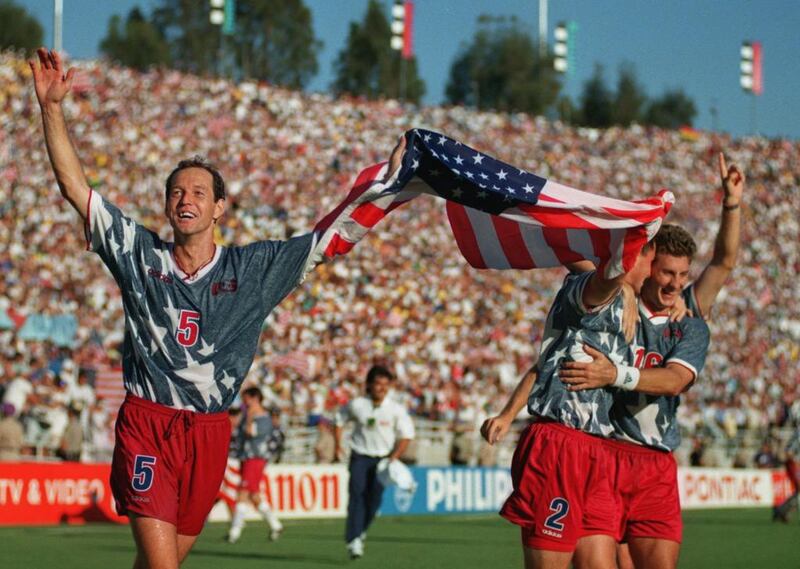With World Cup 2014 to start June 12, The National staff looks back at the most memorable tournaments in a weekly series that will take us up to the kick off in Brazil. First up, Graham Caygill and USA ‘94.
As much as World Cup 1994 in the United States was full of great football and entertainment, its memory and legacy is blighted by one event, the murder of Andres Escobar. The Colombia captain was shot dead at Medellin in Colombia on July 2, 10 days after he had scored an own goal for his side against the hosts, the United States, as they lost 2-1.
That result ended the chances of the Colombians, who Brazilian legend Pele had backed pre-tournament to be champions.
[ Read more: Graham Caygill’s most memorable moments from the 1994 World Cup ]
Escobar’s death, which happened as the knockout stages of the tournament began, stunned the football fraternity and cast a shadow over the rest of the event.
As Colombia mourned Escobar’s death, the football continued in the US.
The final saw Brazil take on Italy at the Rose Bowl, in Pasadena, California, that was played out to a goalless 120 minutes and led to the first penalty shoot-out in a World Cup final.
In keeping with what had gone before, the standard of spot kicks was not very good with four of the nine kicks being missed, Roberto Baggio’s effort sent over the bar proving to be decisive in giving Brazil victory, 3-2.
It was 1970, with the revered side that included Pele, when Brazil had last won the tournament, and the fact they had triumphed in such unremarkable fashion mattered little to the players and fans as the celebrations began.
It was by no means a classic Brazil side, despite the goalscoring power of Romario and Bebeto upfront.
They had developed into a more gritty unit after they had been accused of being tactically naive in previous events. Led by captain Dunga, they were more organised, and conceded goals in only two of their seven matches.
A sign of Brazil’s willingness to mix it up and get physical came when Leonardo was sent off for elbowing Tab Ramos of the US during their second-round match, an assault that left the American with a fractured skull.
A penalty shoot-out was not a fitting end to a tournament that saw several entertaining contests, with a number of superstar players having memorable moments.
Gheorge Hagi was at the centre of Romania’s run to the quarter-finals and Diego Maradona briefly looked great for Argentina before a failed drugs test curtailed his involvement.
Dennis Bergkamp had moments of brilliance for the Netherlands and the goals of Hristo Stoichkov took Bulgaria on a run to the semi-finals.
The 1994 tournament was the last with 24 teams, and it led to stronger group stages – the fact Argentina, eventual finalists Italy and Russia all had to go through as third-place finishers summed up how strong the tournament’s depth was, with only two sides (Greece and Morocco) losing all three of their Group matches.
Despite fears of apathy from the American public, there were strong attendances across the country, and the tournament was a success on the footballing front, even if the long-term memories would remain more with Colombia and Escobar rather than winners Brazil.
gcaygill@thenational.ae
Follow us on twitter at @SprtNationalUAE





